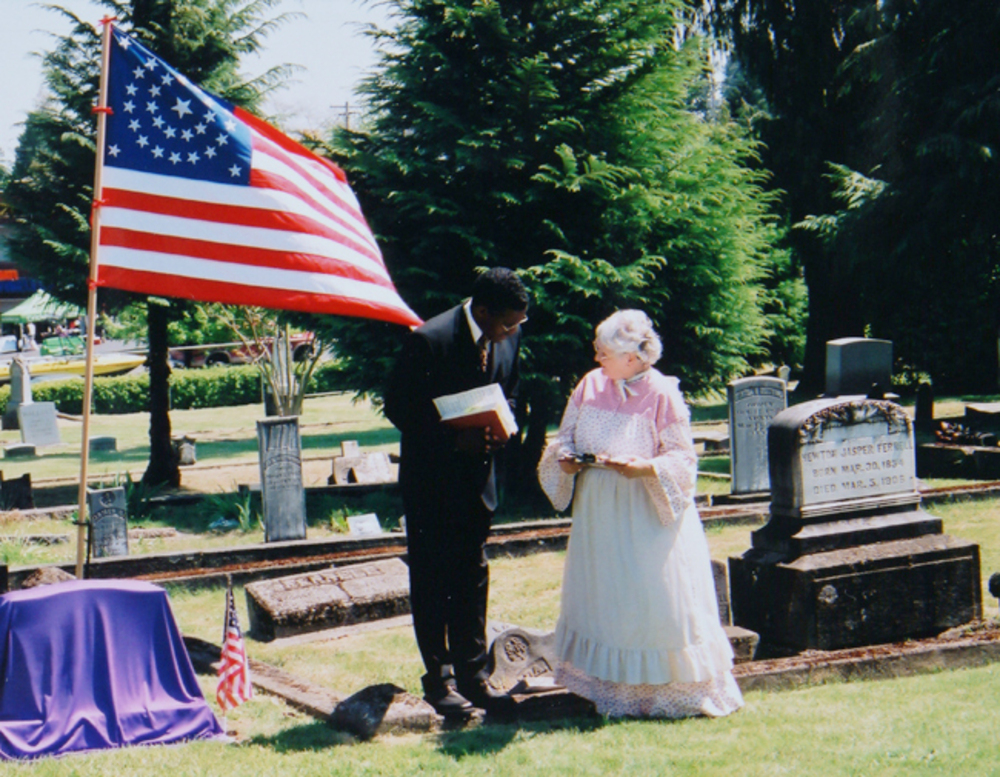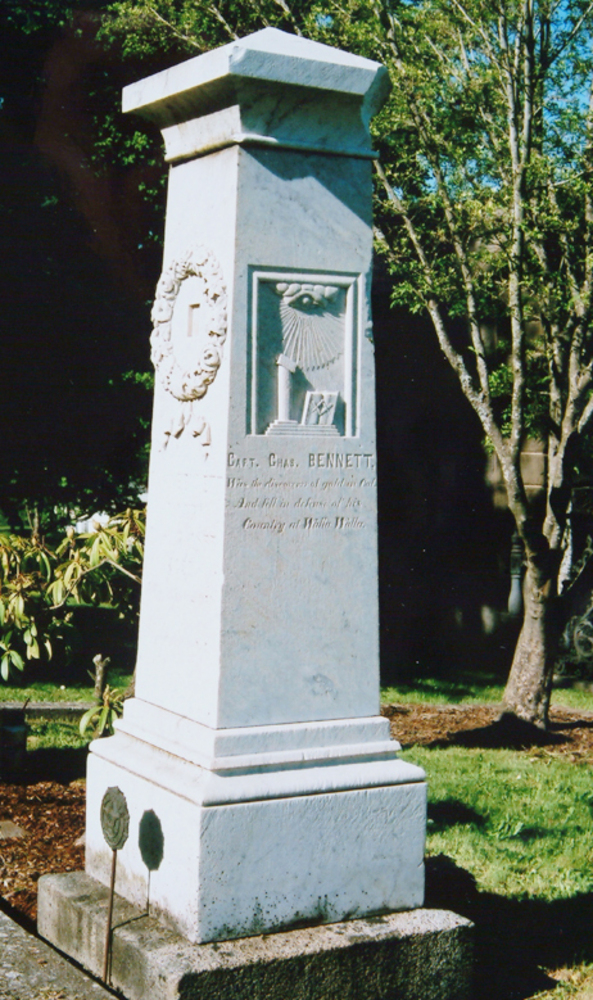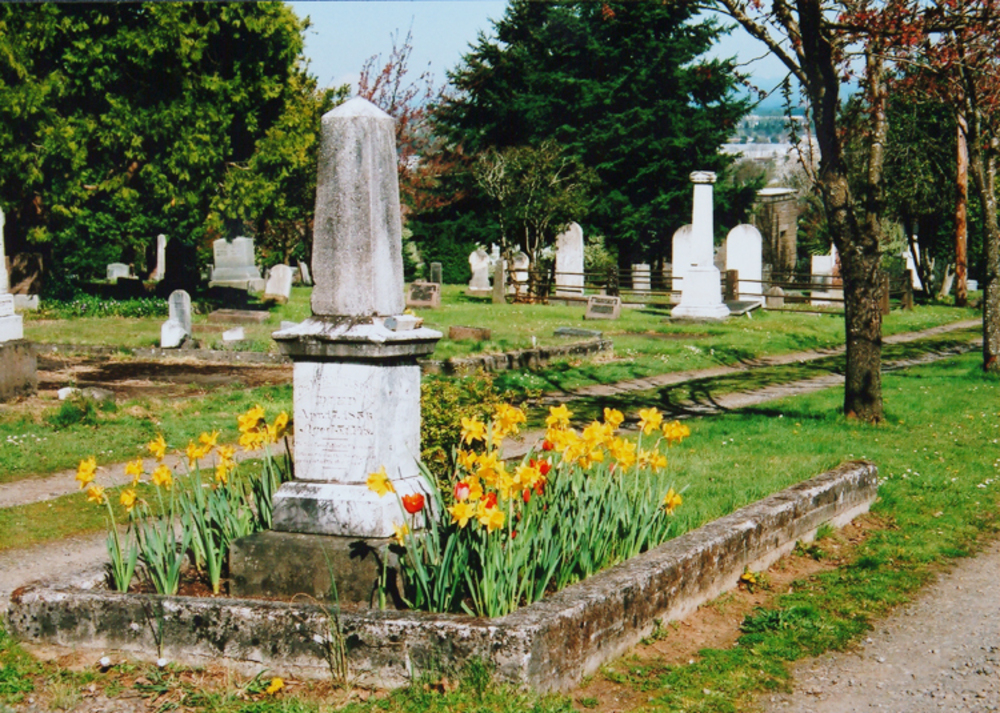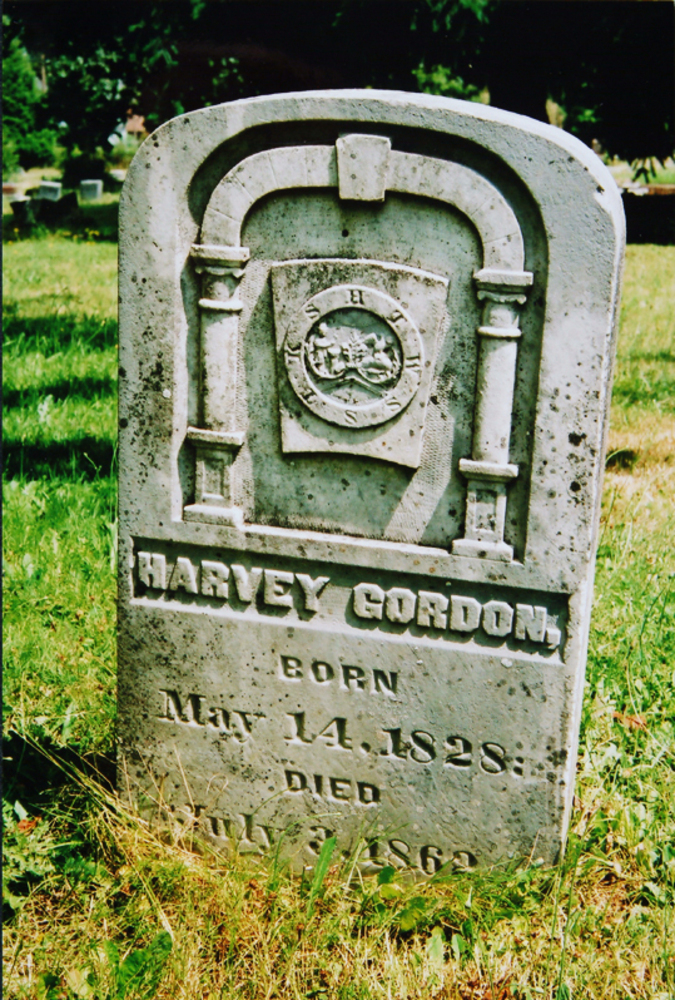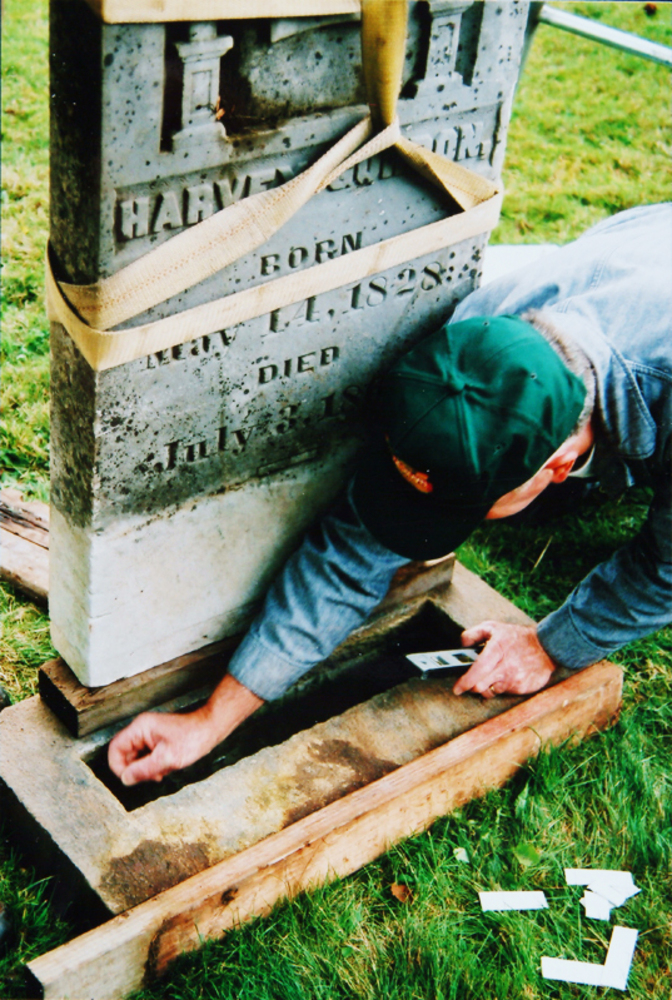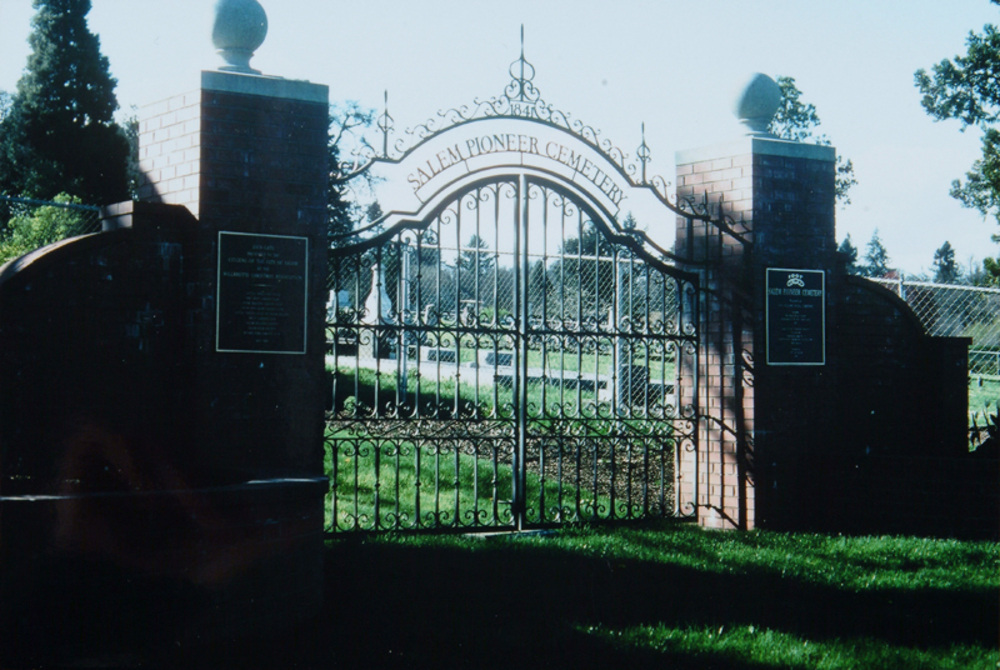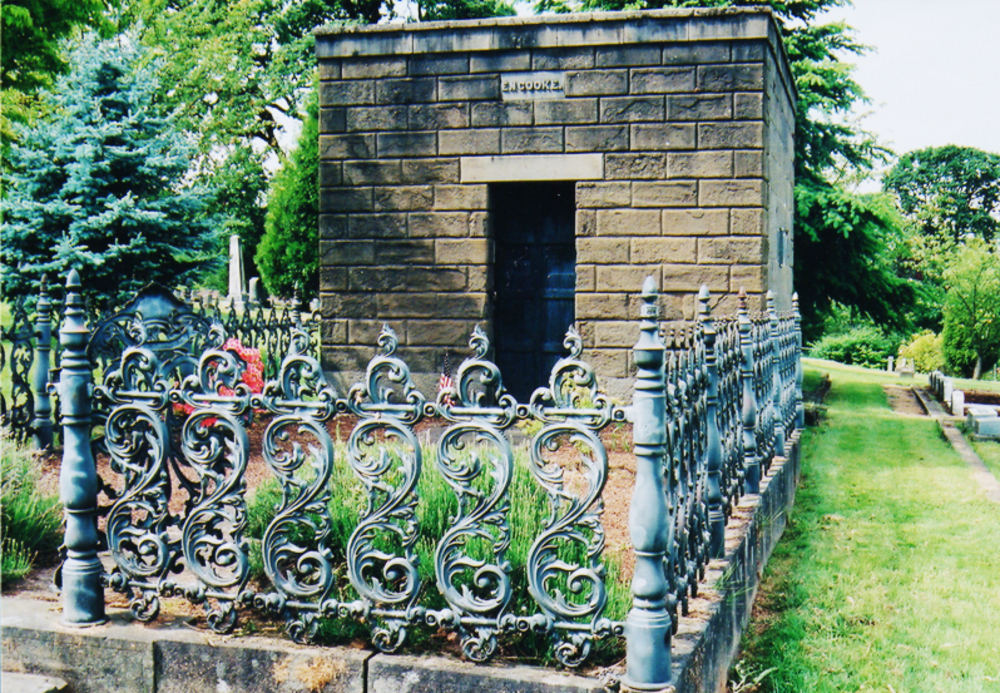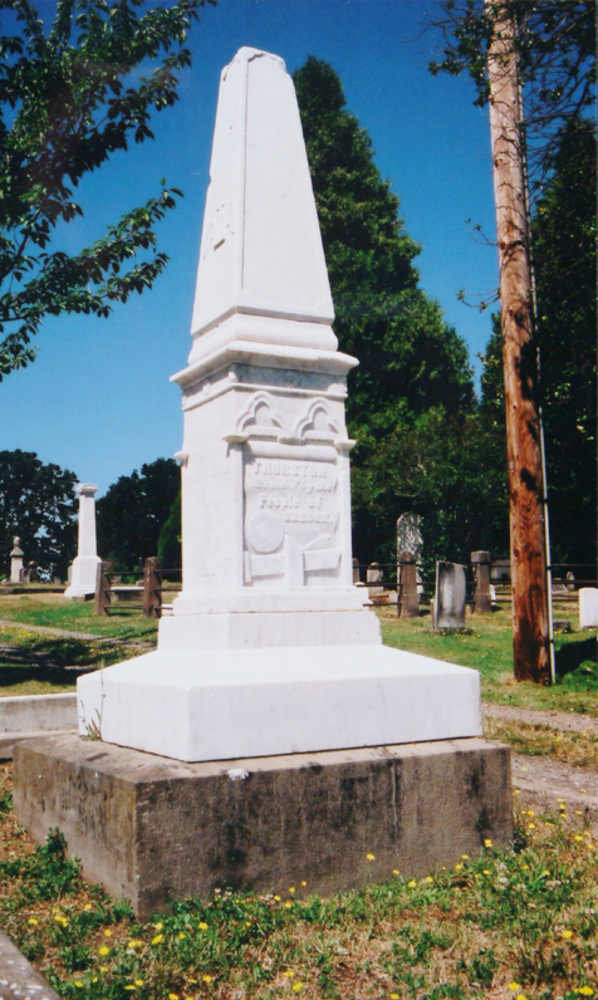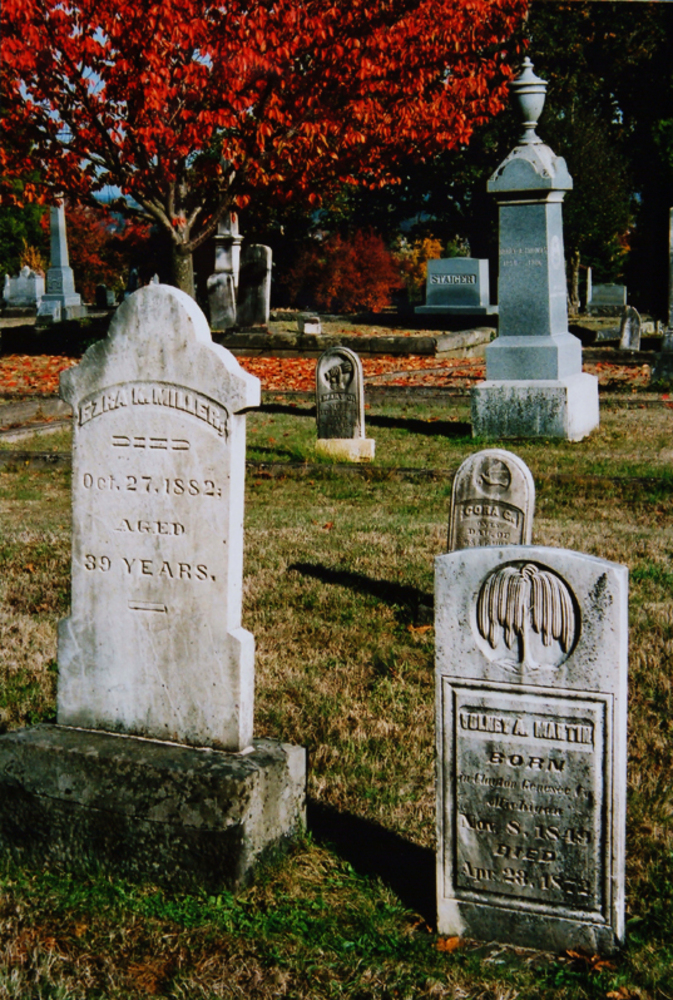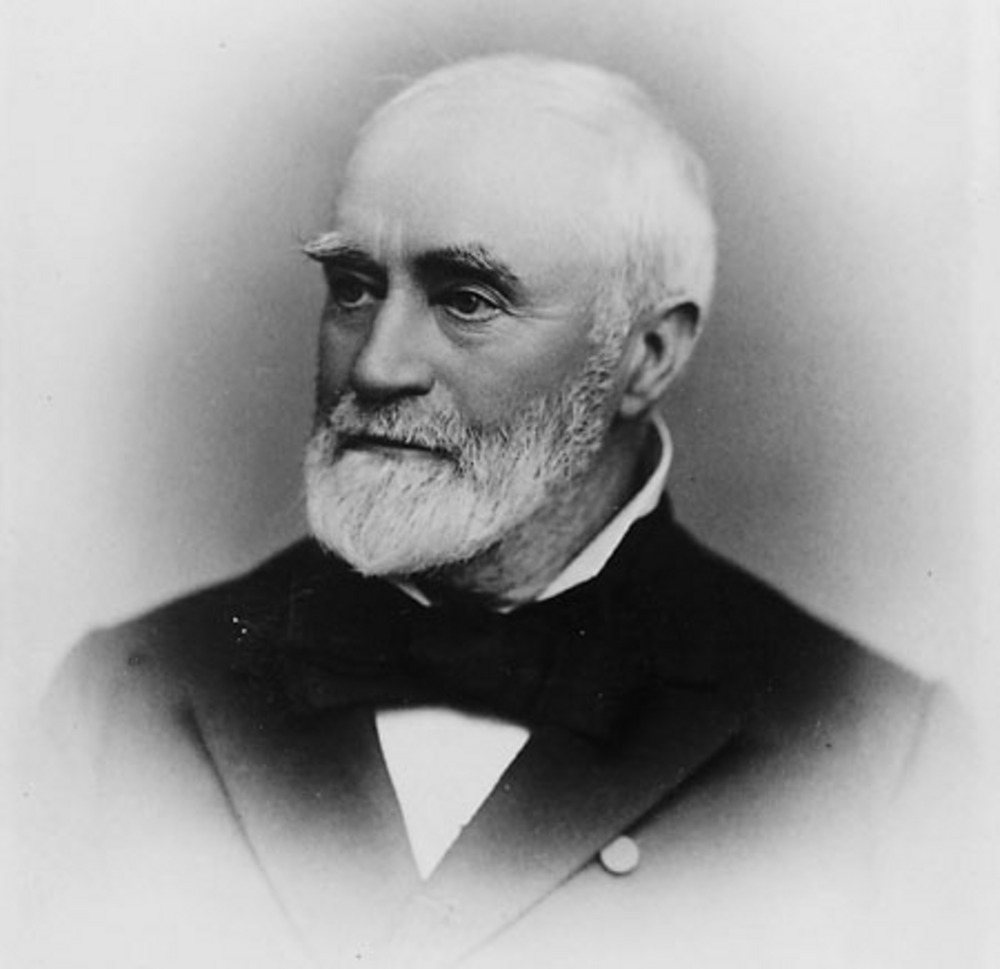Salem originated in 1841 as the second central station of the Oregon mission of the Methodist Episcopal Church. The town was platted in 1846 and became the seat of Oregon’s territorial government in 1853. The Salem Pioneer Cemetery reflects the people who built the town into an educational center, a thriving agricultural and trading hub, and a capital city. It is the final resting place of many Oregon Trail immigrants and of officials of Oregon's provisional, territorial, and state governments. Among the estimated 8,000 people buried in the cemetery are African American pioneers, Japanese Americans, and veterans of military campaigns since the War of 1812.
Situated on the lower slope of a ridge above Commercial Street, little more than a mile south of downtown Salem, the cemetery is shaded by native oaks and madrones and a variety of introduced conifers. Its grid is bisected longitudinally by a central carriage drive, from which bilateral curving lanes branch. In this setting, with its two mausoleums, stately monuments, and ornamental plants, the cemetery embodies the rural park-like qualities of fashionable cemeteries of the Victorian age.
The Independent Order of Odd Fellows (IOOF) established the cemetery in 1854 on five acres purchased on the land claim of former Methodist missionary David Leslie. It grew to its present size of just over sixteen acres with additions to the original plat in 1861 and 1926. Odd Fellows Rural Cemetery, as it was originally known, was a charter project of Salem’s Chemeketa Lodge No. 1, formed in 1852 as the mother lodge of Odd Fellowship in Oregon. The fraternal and benevolent society employed sextons to care for the grounds and register burials until 1944, the year when the last sexton, James Plant, died (he had served since about 1909).
When the cemetery slid into neglect in the post war years, the IOOF appealed for help in maintaining the site. For a time, city and county governments shared maintenance responsibilities. Ultimately, through its Parks agency, the City of Salem agreed to become the titleholder and permanent steward in 1985, the year the Friends of Pioneer Cemetery was organized to support maintenance and restoration efforts. In 1986, the IOOF transferred the deed to the city.
The Salem Pioneer Cemetery continues to be an active burial ground with interments limited to descendants of original plot owners. The original cemetery entrance on Commercial Street was abandoned years ago, and the present entrance is at the head of Hoyt Street. A purely ornamental lychgate of brick and wrought iron was erected by the Friends of Pioneer Cemetery at the site of the original gated entrance in 1988.
Among the notable figures with monuments in the cemetery are Samuel R. Thurston, Oregon Territory's first delegate to the U.S. Congress; William H. Willson, Provisional Government treasurer and platter of the Salem town site; and Chloe Clarke Willson, first teacher of the Oregon Institute (now Willamette University). Noteworthy figures include Tabitha Moffat Brown, co-founder of a boarding school for Oregon Trail orphans that prefigured Pacific University in Forest Grove; Captain Charles Bennett, co-discoverer in 1848 of gold at Sutter's mill in California; John Pollard Gaines, territorial governor from 1850 to 1853; and Asahel Bush, editor and publisher of the Oregon Statesman.
Other early interments of note are those of Harvey Gordon, the land surveyor who designed the Oregon State Seal, and six of the Territory's sixty delegates to the convention held in Salem in 1857 to draft the constitution that would qualify Oregon to be admitted to the union in 1859.
The cemetery was listed on the National Register of Historic Places in 2013.
-
![Dedication ceremony for monument to Hiram Gorman (ca. 1835-1888), an emancipated slave who served with the Union Army during the Civil War and later was the pressman for the Oregon Statesman newspaper. Salem Pioneer Cemetery, May 1, 2002.]()
Salem Pioneer Cemetery, dedication, May 2002, cropped.
Dedication ceremony for monument to Hiram Gorman (ca. 1835-1888), an emancipated slave who served with the Union Army during the Civil War and later was the pressman for the Oregon Statesman newspaper. Salem Pioneer Cemetery, May 1, 2002. Copyright Friends of Pioneer Cemetery
-
![Capt. Charles Bennett's (1811-1855), with John Sutter, co-discoverer of gold in Sacramento Valley, Calif., 1848. Salems Pioneer Cemetery, 2009.]()
Salem Pioneer Cemetery, Bennett, 2009, cropped.
Capt. Charles Bennett's (1811-1855), with John Sutter, co-discoverer of gold in Sacramento Valley, Calif., 1848. Salems Pioneer Cemetery, 2009. Copyright Friends of Pioneer Cemetery
-
![The 1987 Oregon Legislature named Tabitha Moffat Brown (1780-1858) the pioneer mother figure of Oregon. Salem Pioneer Cemetery.]()
Salem Pioneer Cemetery, Brown, cropped.
The 1987 Oregon Legislature named Tabitha Moffat Brown (1780-1858) the pioneer mother figure of Oregon. Salem Pioneer Cemetery. Copyright Friends of Pioneer Cemetery
-
![Island plot in central carriage drive, with monument of William H. Willson (1805-1856) and Chloe Clark Wilson (1818-1874) in foreground. Salem Pioneer Cemetery, 2008.]()
Salem Pioneer Cemetery, central drive, 2008, cropped.
Island plot in central carriage drive, with monument of William H. Willson (1805-1856) and Chloe Clark Wilson (1818-1874) in foreground. Salem Pioneer Cemetery, 2008. Copyright Friends of Pioneer Cemetery
-
![Harvey Gordon (1828-1862), land surveyor and designer of the Oregon State Seal. Salem Pioneer Cemetery, 2006.]()
Salem Pioneer Cemetery, Gordon, 2006, cropped.
Harvey Gordon (1828-1862), land surveyor and designer of the Oregon State Seal. Salem Pioneer Cemetery, 2006. Copyright Friends of Pioneer Cemetery
-
![Friends of Pioneer Cemetery restore headstone for Harvey Gordon. Salem Pioneer Cemetery, 2008.]()
Salem Pioneer Cemetery, Gordon restoration, 2008, cropped.
Friends of Pioneer Cemetery restore headstone for Harvey Gordon. Salem Pioneer Cemetery, 2008. Copyright Friends of Pioneer Cemetery
-
![Lychgate on South Commercial Street erected in 1988 at site of original entrance. Salem Pioneer Cemetery, 1991.]()
Salem Pioneer Cemetery, lych gate, 1991, cropped.
Lychgate on South Commercial Street erected in 1988 at site of original entrance. Salem Pioneer Cemetery, 1991. Copyright Friends of Pioneer Cemetery
-
![E. N. Cooke family vault, built 1870s. Salem Pioneer Cemetery, 2003.]()
Salem Pioneer Cemetery, Cooke, 2003, cropped.
E. N. Cooke family vault, built 1870s. Salem Pioneer Cemetery, 2003. Copyright Friends of Pioneer Cemetery
-
![Samuel R. Thurston (1816-1851), first Oregon Territory delegate to the U.S. Congress. Salem Pioneer Cemetery, 2002.]()
Salem Pioneer Cemetery, Thurston, 2002, cropped.
Samuel R. Thurston (1816-1851), first Oregon Territory delegate to the U.S. Congress. Salem Pioneer Cemetery, 2002. Copyright Friends of Pioneer Cemetery
-
![Salem Pioneer Cemetery, 2008.]()
Salem Pioneer Cemetery, headstones, 2008, cropped.
Salem Pioneer Cemetery, 2008. Copyright Friends of Pioneer Cemetery
-
![Asahel Bush II (1824-1913), founder of Oregon Statesman newspaper, and his wife Eugenia Zieber Bush (1833-1863). Salem Pioneer Cemetery, 2006.]()
Salem Pioneer Cemetery, Bush, 2006, cropped.
Asahel Bush II (1824-1913), founder of Oregon Statesman newspaper, and his wife Eugenia Zieber Bush (1833-1863). Salem Pioneer Cemetery, 2006. Copyright Friends of Pioneer Cemetery
Related Entries
-
![Asahel Bush (1824-1913)]()
Asahel Bush (1824-1913)
Asahel Bush was a key figure during Oregon's formative years, using the…
-
![Tabitha Moffat Brown (1780-1858)]()
Tabitha Moffat Brown (1780-1858)
Of the 158 names inscribed in the legislative chambers of the Oregon St…
Map This on the Oregon History WayFinder
The Oregon History Wayfinder is an interactive map that identifies significant places, people, and events in Oregon history.
Further Reading
"Friends of Pioneer Cemetery." http://www.salempioneercemetery.org/fop.php.
Friends of Pioneer Cemetery website. http://www.salempioneercemetery.org.
Potter, Elisabeth Walton. "Salem Pioneer Cemetery." http://www.salempioneercemetery.org/history.php.

